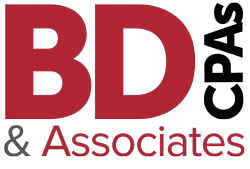The most common mistakes made when setting up a QuickBooks® file; choosing the wrong start date.
The start date selected has an impact on the accuracy and amount of detail in your QuickBooks® reports. The start date chosen also determines how much data you will have to enter.
If your company existed before your QuickBooks® start date, you will need to enter opening balances. Since you may want to run a report in the future with just your opening balances on it, these balances need to be entered on a day when no other transactions have been entered. For this reason, we recommend that you make your start date the day before you record your first transaction. For example, if you want to start recording transactions on January 1, 2017, your start date would be December 31, 2016. So you would enter all your opening balances as of December 31, 2016.
Here are your options for a QuickBooks® file start date and what to consider:
| Start Date | What to Consider |
| The date your company began | This may be a good choice if you started your company recently. If it’s more than one year old, entering historical transactions may be more time consuming than it’s worth. You will get a very clear financial picture – but unless you’ve had very thorough recordkeeping, you run the risk of leaving out important information. |
| The beginning of the calendar year or your fiscal year | This is a great option early in the year. Once you enter historical transactions and continue to use QuickBooks® for your day-to-day business activities, you’ll have a very clear picture of the state of your business. And at tax time you’ll have all the information you need for tax preparation. However, if the year is more than a few months old, it may be too time consuming to enter all the historical transactions into QuickBooks®. If this is the case, you may want to consider a more recent start date. |
| The beginning of an accounting period (first of the month, etc.) | This can be a good option later in the year. You’ll need to enter historical transactions as of the end of the prior period (month, etc.) But it will give you a good record of your transactions for the current period (month) and those periods going forward. |
| Today’s date | This is the least time consuming option. All you need to do is enter your opening balances (the balance of your accounts as of yesterday). But you won’t be able to track your business before today’s date, and may need to search for information come tax time. |

